Five Ukrainian war startups taking on Russia’s brute force
From AI spying systems to ground drones, Ukraine is revealing the power of grassroots innovation against Russia's top-down military behemoth, with agile defense tech startups tailored to the war's realities. The post Five Ukrainian war startups taking on Russia’s brute force appeared first on Euromaidan Press.
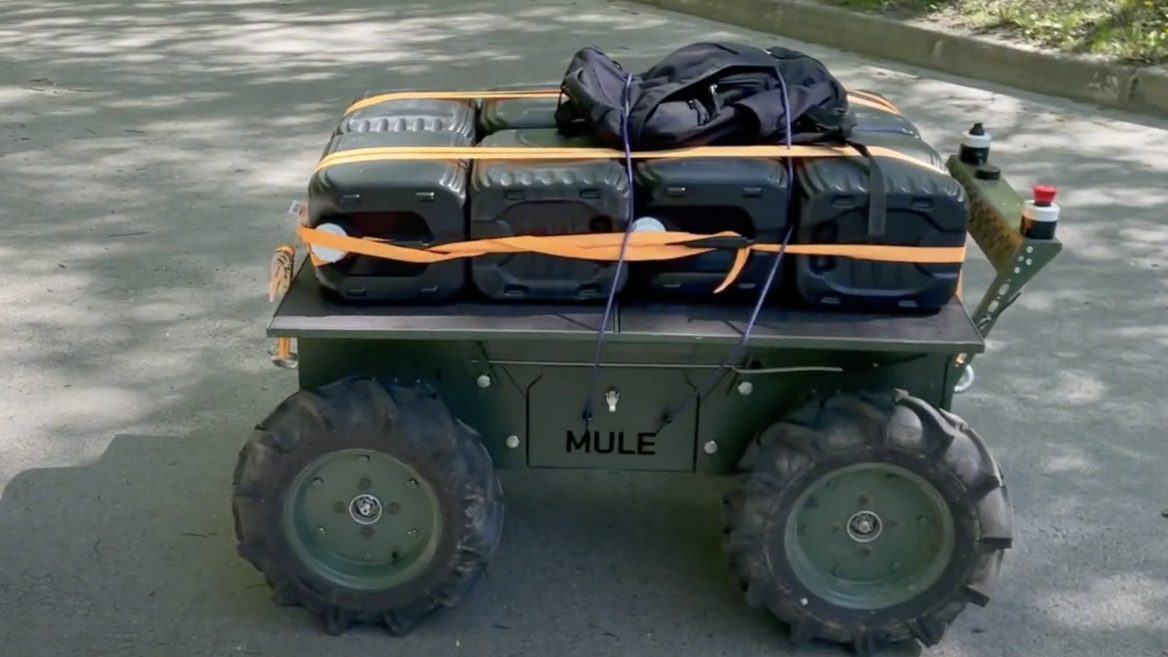
“We are seeking innovations that bring Ukraine closer to victory,” declares the main page of Ukraine’s state platform for defense techology development, BRAVE1, launched on 26 April 2023.
Any Ukrainian citizen or organization can submit their developed technology or development idea to become part of a cluster that facilitates collaboration between developers and manufacturers and various state agencies, including the General Staff, the Ministry of Defense, the Ministry of Economy, and the Ministry of Digital Transformation.
Developers also have the opportunity to apply for grants of up to $25,000, either to scale up production or further develop their products – with the added benefit of gaining state permission for military use.
The advantage of this inclusive and participatory system is its contrast to the hierarchical and slow state defense sector. Given that many defense tech solutions come from technology companies accustomed to project management approaches, BRAVE1’s horizontal structure allows them to contribute to Ukraine’s military sector.
The cluster, involving four Ukrainian ministries, the National Security and Defense Council, and the General Staff of the armed forces, enhances cooperation between private developers and the state apparatus. Specifically, the General Staff provides military expertise and determines the need and priority of developments, while the Ministry of Defense ensures preparation and grant access for operational use. In total, over 500 experts assess projects to meet predefined timelines.
Ukraine’s robust IT sector and related technological fields are the primary sources of defense tech innovations. In addition to businesses, educational institutions, and research institutes also submit developments. These stem from Ukrainian scientists as well as student startups.
“We have fewer resources than our adversaries. Only by waging a smart war on land, in the air, at sea, in space, and in cyberspace can we prevail. Victory requires the mobilization of Ukraine’s entire intellectual potential,” states Nataliya Kushnerska, the head of the BRAVE1 cluster, in a conversation with the Ukrainian media outlet Business Censor.
Here, we’ve picked out five stories of new Ukrainian defense tech developments engaged in BRAVE1.
HIMERA G1 radios
HIMERA G1 are inexpensive encrypted military radios that are not jammed by Russian electronic warfare. While US portable army radios cost around $15-16 thousand, the pure cost price of HIMERA G1 is just over $100. Moreover, no special programming tools are required, while everything is configured via a smartphone. As the founders say, this is a radio made “for the people.”
The founders explain they deliberately made a device with a price tens of times lower than the market price. This was done to maximize the enormous needs of the Ukrainian military, as currently Ukrainian troops mostly use civilian radios on the frontlines, suitable for police departments and security companies, not combat. Encrypted radios are needed for the 250,000 Ukrainian troops in forward areas, as these people may be affected by Russian EW. The founders say this invention is an asymmetric response to the Russian EW Russia has spent billions on.
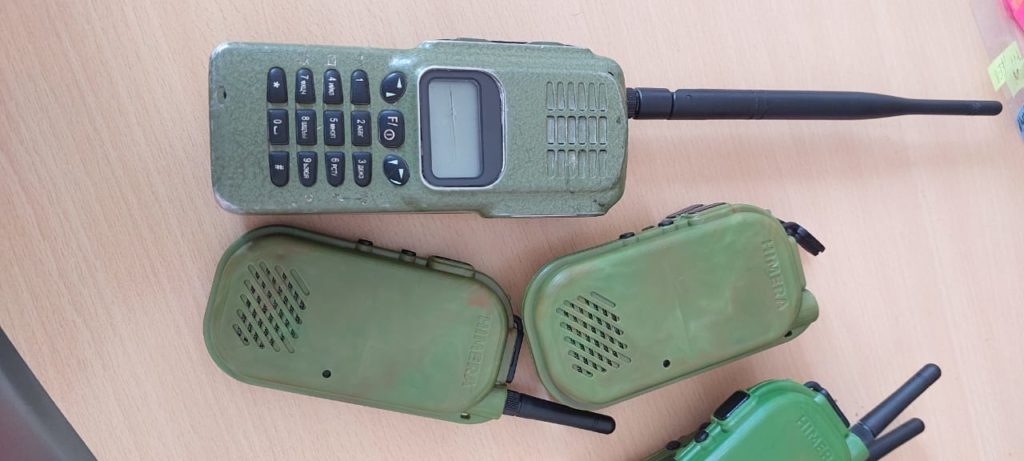
“In the last thirty years, Western armies, NATO forces fought in Afghanistan, Iraq and Syria. Their opponent was not technologically savvy. Russia really has powerful electronic intelligence and electronic warfare technologies. They have invested billions of dollars in this area for decades. This is the problem we are solving,” says Misha Rudominskyi, co-founder of HIMERA.
HIMERA radios stand out with built-in AES encryption, using a 256-bit key. This means Russian electronic warfare specialists will struggle to intercept military signals, unlike other radios that require separate encryption. HIMERA’s integrated AES ensures security for the next century, eliminating the need for obscure verbal codes.
“Another advantage of the HIMERA radio station is its frequency hopping capability (technically known as PRPCF). To understand how this works, picture a stream. To disrupt it, you only need one obstacle – think of this stream as a radio device’s working frequency. The obstacle represents enemy electronic warfare equipment (EW). When you have thousands of these streams, flowing in various directions and planes, blocking them becomes incredibly challenging,” says Oleksiy who has been developing these radio stations.
In April, the founders started small-batch production. As of August, over five hundred HIMERA devices were already on the frontlines. In May 2023, when mass production of the radios began, most went to the Bakhmut direction. The founders say they have received positive and grateful feedback from the military, such as “The enemy EW is processing us. They turn it on for about 15 minutes. But your stations keep working.”
Individual servicemen, combat vehicle crews, reconnaissance personnel, snipers, UAV operators, platoon-company units are using the radios.
“As soon as we get feedback from the military that ‘this button could work better like this,’ we immediately refine it. We understand that our margin of error is much greater than ‘the phone is not working in Kyiv.’ At the front, communication literally means life and death,” explains Rudominskyi.
Before the full-scale invasion, the founders were developing electronics sold in North America and Europe. In particular, according to the developer, the HIMERA military radio project started long before the large-scale Russian invasion, as a commercial one focused on entering the foreign market and mass production. These developments allowed quickly developing a full-fledged tactical-level communications system for the military.
“In an ideal world, we would need two years sitting in the lab for such a development, but we don’t have those two years – Ukraine itself doesn’t have those two years,” says Rudominsky.
Mule cargo ground drone
The Mule is a multi-purpose electric cargo ground drone by Keep Robotics, designed for logistics tasks. For example, the Mule can support infantry groups carrying heavy loads that would otherwise have to be carried manually.
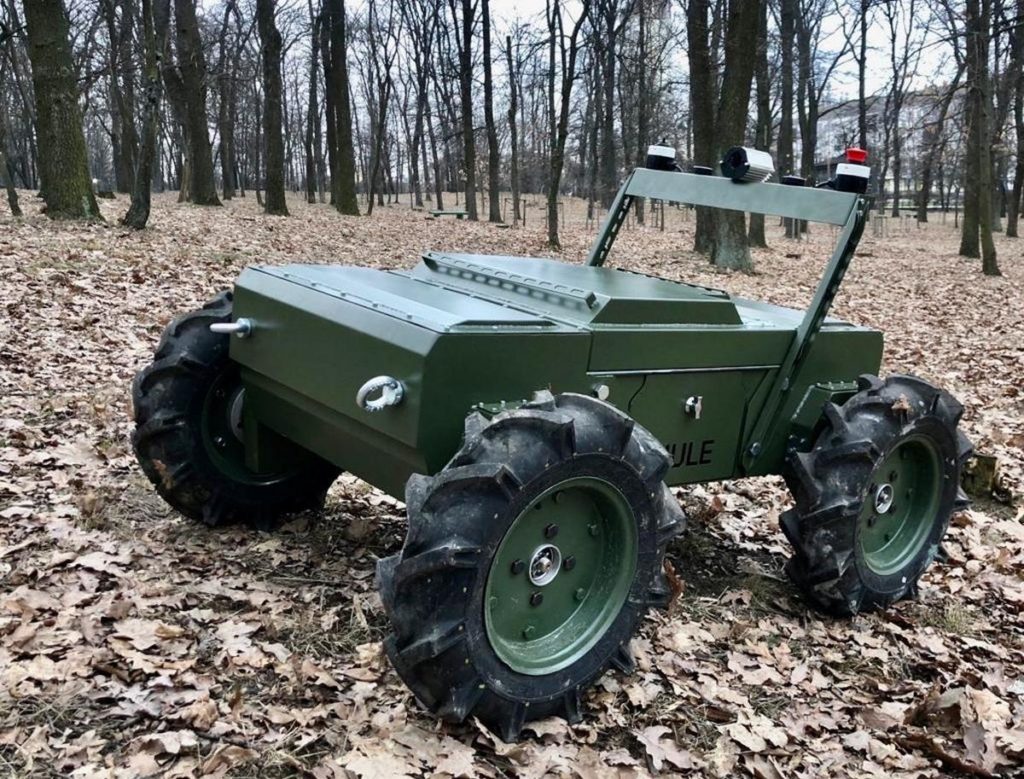
The drone carries up to 400 kg and can travel 60-80 km per charge depending on conditions. Its operating time is 8 hours. The Mule can transport cargo in high-risk areas since it is an unmanned platform and can also be used in difficult terrain. The all-terrain vehicle when loaded can overcome obstacles up to 20 cm. The system has quiet electric motors, making it low observable.
The drone weighs 250 kg, is 1.5 m long and 1 m wide.
“The drone’s dimensions were chosen so that it could be transported in a pickup truck bed or cargo vehicle, making it quite mobile,” explains Keep Robotics founder Pavlo Sheliazhenko.
The Keep Robotics team is small and focuses on large-node assembly. It orders finished components from Ukrainian subcontractors. The cost of one system is $8-9 thousand. Thanks to significant production decentralization, the team is ready for rapid scaling.
The Keep Robotics team started working on the Mule in the fall of 2022. Now, the Mule’s creators are collaborating with a Kharkiv team to create a demining system based on the drone. According to Sheliazhenko, the system is designed for anti-personnel mines, with the drone pushing a flail ahead of itself to detonate mines.
Enemy information processing system Griselda
The Griselda system, which works using artificial intelligence, allows automated collection of information about the enemy, their location or movement. The product specializes in high-speed, high-quality processing of large data streams, secure storage, and process automation for data input and transfer.
After the automatic analysis modules and neural networks analyze, filter, and confirm incoming enemy information, system operators and military analysts verify the data. Verified information is published on the platform for use. The system is used in particular by situation centers and intelligence units to search for information about the enemy, reports, verify military hypotheses, and work against ISR.
The Griselda team says that all system modules are dictated by the war. In other words, the project did not even have time to develop hypotheses; everything was dictated by practice and interaction with the military.
Over 25,000 targets are processed per month via Griselda, and the record time from receiving information about the enemy to its appearance in the system was 28 seconds. Information is transmitted to the military in many ways. Griselda publishes information not only on its platform but also on other military applications.
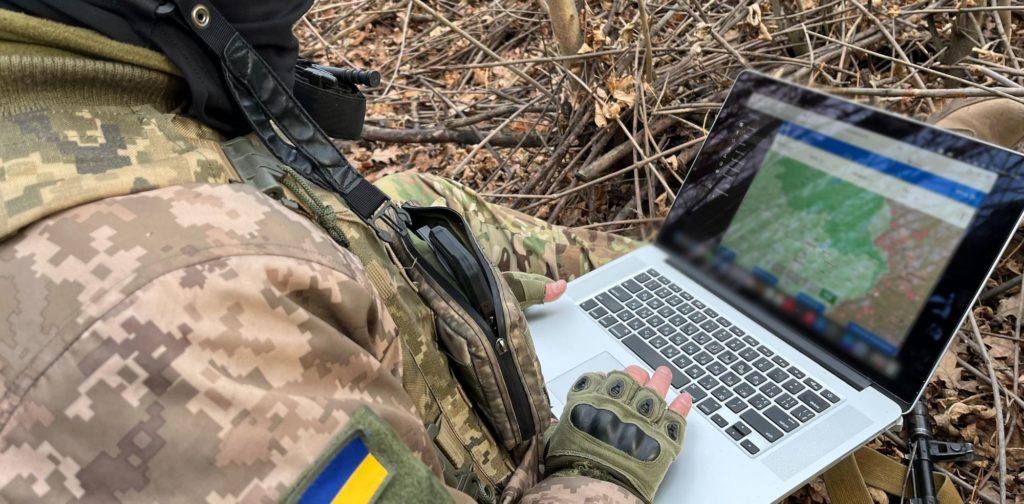
The Griselda system was born in the first weeks of the full-scale war when it became clear that the huge flow of information filling the networks needed to be checked and structured. Back then the team consisted of 5 people who, as they claim, “worked on the project 24/7″. Today, the team employs hundreds of people, including programmers, military experts, sociologists, scrum managers from world-leading companies, volunteers, mobilized military, veterans. The team is in active consultation with SSO, Armed Forces, SBU units.
“What working at large corporations taught us is the mandatory quality assurance at each verification stage, as well as the principle of “everything concerns me.” We know that the end user has very limited time to think over and analyze information. So we have to analyze everything to the last detail. This is a huge responsibility for the team, and everyone is aware of it,” says the project team.
The entire information flow entering the system goes through several stages of analysis.
- At the first stage, superficial verification is performed using AI, which automatically selects valid information (duplicate data, relevance period or misinformation). The processed data is combined into a block of information with the status “New Ticket”.
- The processed information is checked by the operator for relevance and coordinate validity. If necessary, he can correct the data.
- After verification by the operator, the information with the status “processed” goes to the military analyst, who can compare it with the original message and make edits.
- At the final stage, the information is re-checked by the AI to train the neural network and prevent errors that operators might have made during manual correction.
The Griselda system is developing rapidly – every two weeks a new sprint is completed with the release of useful functionality. Among the system features are modules for automatic decryption of radio messages, scraper bots, instant preview modules for a selected layer with device quantity restrictions.
Shooting training app Drillapp
Drillapp is a training app for gun owners to practice shooting skills. The app contains lesson, exercise, and course content for different types of weapons; in addition, users can record their own weapon training and send it to the instructors for feedback. Although the app is not a replacement for an instructor, it enhances one’s tactical weapon-handling skills, says Oleksandr Husarov, co-founder of Drillapp.
The application is freely available to Ukrainians, who make up the primary user base. 60% of app users are Ukrainian military, but many civilian Ukrainians use it too. Commanders of some units, says Husarov, instruct soldiers to install the app and train. Moreover, as the app functions offline, soldiers can continue practicing even in areas without mobile connectivity, which is often lacking on the frontlines.
Thanks to cooperation with BRAVE1, there are agreements to distribute the app among military training units. Negotiations are also underway to create a military version of Drillapp.
“In the first days of the offensive when Javelins were handed out to Ukrainians, the guys didn’t know how to use them. They sent each other screenshots of photos – press here, this comes out there. That’s how they burned the first ten tanks. The military version will have structured content – a convenient diagram of images of different weapons, disassembly, how it works, how to sight in, common mistakes. It’s not a quick procedure, but there is demand. Of course, the military version will not be available to civilians,” explains Husarov.
Drillapp had been under development for approximately eight months prior to Russia’s full-scale invasion. The original plan was to launch it in the US market. However, the outbreak of the full-scale war brought about a dramatic shift, prompting the startup to alter its model and refocus its efforts on Ukraine. The Drillapp team currently has about 15 specialists, mostly developers.
“I became interested in shooting before COVID. During the pandemic, I couldn’t visit shooting ranges. I needed a tool that would allow me to practice. However, I couldn’t find a good product. Then the war started. In April, I watched as trucks in Kyiv distributed weapons. Thousands of rifles. But people not only didn’t know how to shoot; they couldn’t even handle the weapons (…) We have no other option but to teach everyone to shoot. It may sound unpleasant, but these are the realities. Either we work together, or Ukraine will disappear,” Husarov tells Bussiness Censor.
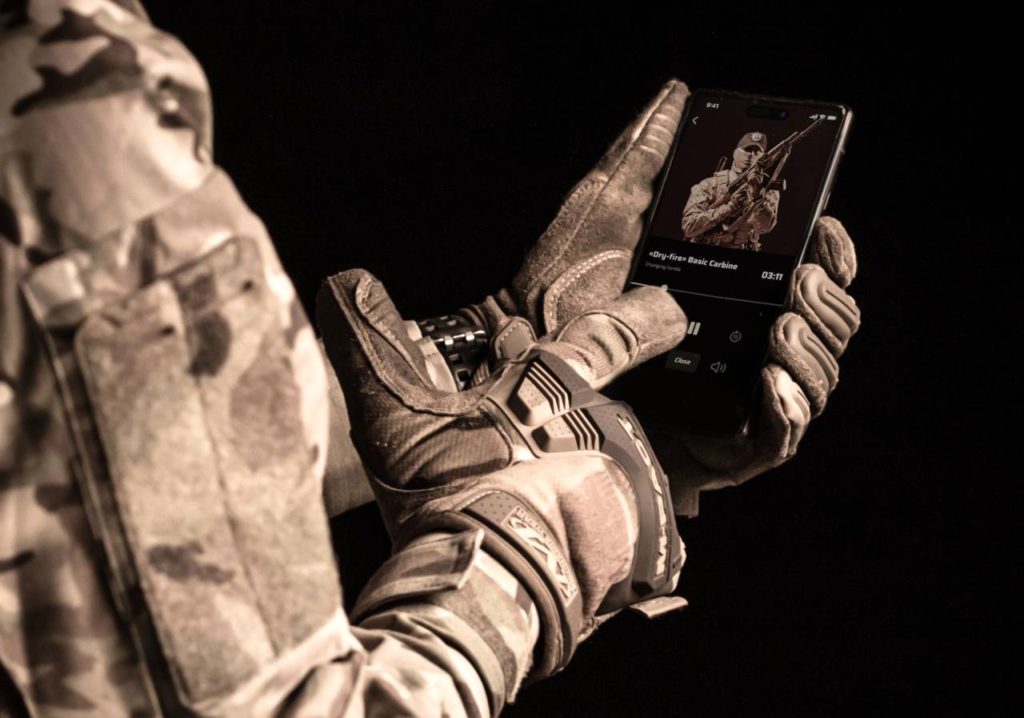
Currently Drillapp has 65,000 registered users. Ukrainians (35,000) make up the core Drillapp audience. Poles are second (about 10,000).
“In Poland, we are learning to monetize. We have a subscription model. You get about 30 free exercises. If you want more – you pay monthly or yearly. Support is also paid, because coaches work there. In Poland it costs around $5/month,” says Husarov. Other nationals using Drillapp include Germans, Austrians, and Americans.
In the future, the company plans to build computer vision on this basis and teach artificial intelligence to provide feedback in real time. “The AI will tell you, for example, to change the direction of the weapon,” explains Husarov.
The simulator is only “part of the puzzle,” says Husarov. “The platform can be filled with any content. Now, for example, we are filming tactical medicine and small unit tactics theory – what is most needed at the front. Our military and medics are now the most experienced and coolest in the world. Americans themselves come to the Ukrainian platform. After the victory, we will definitely monetize it!”
Eter direction finding systems
Due to the large number of enemy electronic warfare systems in this war, direction finders are critical for military operations, as they allow the military to understand where a radio signal is coming from. The Ukrainian company Falcons created a cost-effective direction finder ETER, which identifies the source of emissions from enemy radios, EW systems, and UAVs.
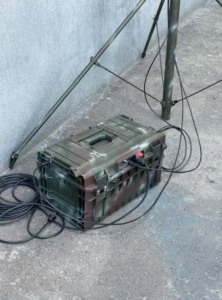
The complex has secure communication channels and provides autonomous operation. According to Falcons, ETER’s main advantage is that the military no longer needs to work near the equipment as before. It needs to be deployed in the right place according to the tactical situation, and then one can work from any point in the world.
Svitlana Braslavska, co-founder, operations and marketing director of Falcons, talks about the best crash test the direction finders passed in combat, demonstrating the real value and importance of these direction finders given their moderate price:
“An S-300 flew to the place where our direction finder was located. A huge missile that costs two million dollars, and supposedly shouldn’t be used for such targets. Reconnaissance equipment are priority targets on the battlefield for both us and the Russians. So the enemy understands the cost of the mission and does not spare such expensive means of destruction for radio reconnaissance equipment. Then we took the system, checked everything, reconnected the contacts, and continue to use it.”
American and European direction finders cost over a million dollars. Ukraine’s only major manufacturer also offers a fairly expensive solution. Until this phase of the war, there was no need for such direction finders in the world, says Braslavska. The Eter complex includes three direction finders, while the global standard is two.
“There has been no war like in Ukraine – not in Iraq, nor Afghanistan, nor Syria. By the number of radio signals, a completely new war. Radio signals come from everywhere: from drones, from EW systems, from communications. A new need arose in the new war – understanding where the radio signal comes from,” Braslavska says.
 One of ETER’s co-founders has been defending Ukraine since the beginning of Russia’s full-scale invasion, and before that worked in IT. In his six months of service in the Defense Forces, he gained an understanding of what and how technology and approaches used in IT can improve.
One of ETER’s co-founders has been defending Ukraine since the beginning of Russia’s full-scale invasion, and before that worked in IT. In his six months of service in the Defense Forces, he gained an understanding of what and how technology and approaches used in IT can improve.
The project’s success, says Braslavska, lies not in laboratory developments, but in the experience of one of the founders in the war. The team also interviewed military personnel in many areas, in different units, asking what exactly is needed. Thus, the product was shaped around these needs.
Thanks to the support of a private donor, small-batch production has already been set up. Currently, says Braslavska, this is not enough to reach their goal – “to saturate the front line with direction finding equipment and have the ability to quickly repair them, because in combat they will undoubtedly be destroyed… To scale, we need $300 thousand in investment.”
The BRAVE1 grant will help the team last a few weeks or months, depending on scaling, says Braslavska. The team also hopes for approval for use from the Ministry of Defense, which will allow fulfilling state orders, as well as orders from individual military units.
Related:
- Ukraine’s Defence Tech cluster invests $225,000 in 15 projects for Ukraine’s army
- Ukraine rolls out secure radio to counter Russian electronic warfare
- Minister Kamyshin: Ukraine’s defense industry shifting from “give us” to “let’s do it together” model
- Ukrainian engineers created an invisibility cloak to protect troops from Russian thermal imaging
- Old weapons, new tricks: Ukraine’s air defense adapts to beat Russia
- From Javelin sims to suicide subs: Five top Ukrainian military technology advancements
- Ukraine receives three RADA radars produced by Israeli defense technology company to detect Russian missiles
- Ukrainian artificial intelligence project Zvook helps shoot down Russian missiles
- Ukrainian IT sector repels Russian aggression on five fronts
You could close this page. Or you could join our community and help us produce more materials like this.
We keep our reporting open and accessible to everyone because we believe in the power of free information. This is why our small, cost-effective team depends on the support of readers like you to bring deliver timely news, quality analysis, and on-the-ground reports about Russia's war against Ukraine and Ukraine's struggle to build a democratic society.
A little bit goes a long way: for as little as the cost of one cup of coffee a month, you can help build bridges between Ukraine and the rest of the world, plus become a co-creator and vote for topics we should cover next. Become a patron or see other ways to support.
The post Five Ukrainian war startups taking on Russia’s brute force appeared first on Euromaidan Press.



